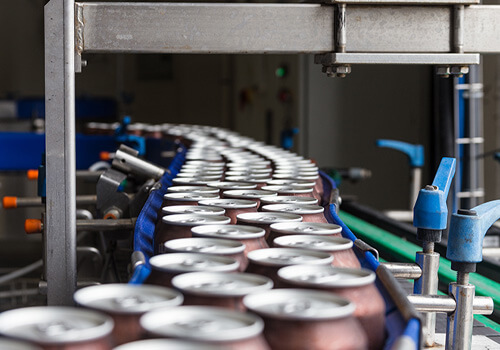Brewery nightmares avoided with integrated controls
Scenario 1: Unexpected glitch in chiller loop
A craft brewer executed a recipe with a knock-out temp at 64F and set the
fermentation temp control at 68F as he usually does. When he came in the next morning, the temp was reading
35F. How could this have been avoided?
A text alert to the brewer's phone would have saved a lot of headaches.
Scenario 2: Finicky glycol sensors and solenoids
A craft brewery operates a 4 BBL system with a factory-equipped controller for
the fermenters and brite tank, plus individual temperature sensors to manage solenoids for glycol valves. It
also includes several different types of temp probes, but the individual temperature controllers are finicky.
Sometimes, the brewer finds that glycol is flowing regardless of the position of the switch and the
temperature of the probe. How does he troubleshoot this issue?
Those little temp controllers can be tricky to set up and calibrate. An integrated system would help the
brewer manage the whole system.
Scenario 3: Where's the short in my PakTech applicator?
A craft brewer had an issue with a relatively new PakTech applicator. In just
five months, he burned through a main cylinder position sensor every month. He confirmed with the manufacturer
that all voltages are correct, fuses are properly installed, and everything is grounded. The manufacturer
suggested magnetic interference, but the brewer's not convinced that's the issue.
We are great at troubleshooting, specifying and setting up sensors like these.
Scenario 4: Process Improvement via logs and trends
Some brewers involved in a group studying analytical testing methods are asking
how to apply process archives to improve quality, increase throughput and reduce costs. Is there a way to use
archival data to achieve these process improvements?
Process measurements that are logged and trended can help with this for sure. Getting a visual picture of
the different data points at the same time helps one understand the process better and how they interact
with one another.
Scenario 5: Temp stratification causing packaging issues
A craft brewery runs an open-air five-head filler connected to a brite tank with
two side jackets and a bottom dish jacket, and it is experiencing temperature stratification during packaging.
Since temperature is very important for foam creation and DO/TPO, this problem can upset up an otherwise
smooth canning day. There's a manual ball valve on each of the three brite tank jackets supplied by a
motorized ball valve which cycles with the RTD tank reading. Can the manual ball valves be adjusted to solve
the stratification issue?
Why mess with manual valves when they have automatic valves in series? Three individual temp
controllers/valves for the same tank can lead to stratification issues.



